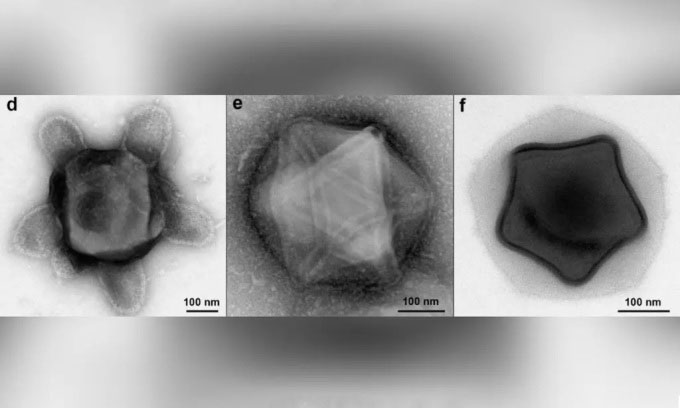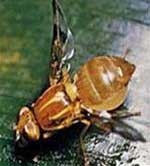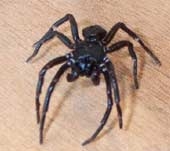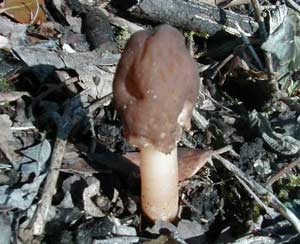Experts have discovered what are likely a new type of giant virus particles in the soil of Harvard Forest, Massachusetts, exhibiting unprecedented characteristics.
According to a new study published in the bioRxiv database, some viral particles have a star-like outer shell, while others possess unusual tube-like appendages, as reported by Live Science on July 31.

Scientists have discovered new giant virus particles with unique shapes. (Photo: Matthias Fischer)
“We found a variety of new and unique shapes that have never been seen before. I bet that many of these particles, even the majority, are completely new viruses and are being observed for the first time,” commented Matthias Fischer, co-author of the study and virologist at the Max Planck Institute for Medical Research.
Giant viruses typically range in size from 0.2 to 1.5 micrometers and have complex genomes that can contain up to 2.5 million base pairs of DNA. This number is significantly larger than that of most viruses, such as the influenza virus, which measures only 0.08 to 0.12 micrometers in diameter. So far, experts have noted that giant viruses usually infect unicellular organisms, such as amoebas, rather than animals or humans. This group of viruses has been found in ecosystems around the world, including oceans, Arctic lakes, and even melting permafrost.
In 2018, another group of scientists discovered giant viruses in the soil of Harvard Forest by analyzing metagenomics. Specifically, they compared the genetic material found in forest soil with available gene sequences from a global genetic database.
However, in the new study, the expert team employed a different method. They analyzed forest soil samples using transmission electron microscopy (TEM), utilizing electron beams directed into the soil to observe viral particles with remarkable detail.
“Genomics can only give you a certain level of understanding about an organism, so you don’t know what it looks like. Giant viruses are not only diverse in their genomes but also in their particles and structures,” Fischer explained.
However, since Fischer’s team did not conduct genomic analyses, they cannot definitively classify the newly discovered particles as viruses, although the likelihood is high. Instead, they refer to them as “viral particles” in the new study.
The observed images revealed a viral particle with a unique double-layered star-shaped shell, while another type exhibited numerous protruding fibers of varying lengths, thicknesses, and densities extending from the particle’s surface. The expert team speculates that some of these characteristics may help them adhere better to host cells. Researchers also believe that similar giant viruses could be found in the soils of other hardwood forests around the world.
Fischer also emphasized that these giant viral particles may not pose a threat to humans but rather play a crucial role in the ecosystem. The study indicates that viruses in the soil are key components of the carbon cycle—the process of carbon moving between organisms, minerals, and the atmosphere—because they help regulate the abundance of microorganisms that directly influence carbon flow underground.





















































